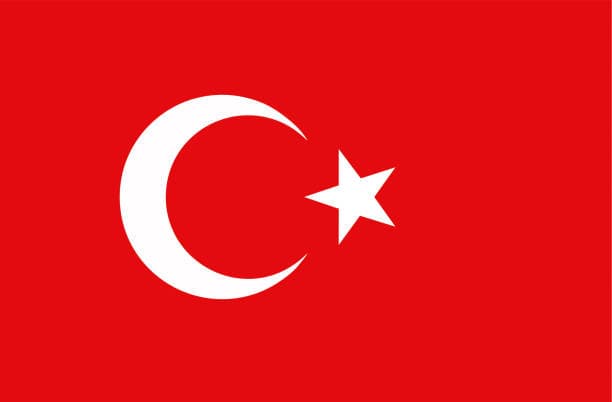
Guide to Starting in Pakistan: Challenges and Opportunities
Summary
YouTube's presence in Pakistan has been characterized by a dynamic interplay of restrictions and growth, illustrating the platform's significant impact on the country's digital content landscape. First introduced to Pakistan in the early 2000s, YouTube faced a notable setback in 2012 when the government imposed a ban following the release of the controversial anti-Islamic film "Innocence of Muslims."[1][2]. The decision underscored the tension between freedom of expression and regulatory control in the country, leading to widespread debates about internet censorship and access to information[1]. Despite subsequent intermittent blocks, YouTube's eventual return in 2016 marked a critical juncture for digital content creators, providing new opportunities for engagement and creative expression[3].
Since its relaunch, YouTube has evolved into a cornerstone of Pakistan's digital ecosystem, supporting a burgeoning community of content creators who leverage the platform to reach both local and international audiences[4]. The introduction of features like YouTube Shorts has expanded the platform's appeal, particularly among younger generations[5]. Popular channels, such as "Food Fusion" and "Kitchen with Amna," illustrate the diverse array of content that resonates with Pakistani viewers, ranging from culinary guides to entertainment[6]. As of 2023, monetization opportunities on YouTube, including ad revenue sharing from Shorts, have further incentivized content creation, fostering an increasingly robust creator economy[7].
However, the journey of YouTube in Pakistan is not without its challenges. Regulatory hurdles, such as government-imposed bans and content removal requests, continue to affect the platform's operations and raise concerns over digital rights and freedom of speech[1]. Additionally, monetization barriers, including stringent criteria under the YouTube Partner Program, pose significant challenges for emerging creators seeking to capitalize on their digital content[8]. These obstacles highlight the need for adaptive strategies and greater infrastructural support to ensure the sustainability and growth of digital content creation in Pakistan.
The future of YouTube in Pakistan is promising, driven by increasing internet penetration and improvements in mobile data infrastructure[9]. As the digital landscape evolves, Pakistani creators are poised to make substantial contributions to the global content scene. Ongoing governmental and industry efforts to enhance digital connectivity and reform regulatory frameworks could further support this trajectory, empowering creators to harness YouTube's full potential in the years to come[10][11].
History of YouTube in Pakistan
YouTube's journey in Pakistan has been marked by periods of accessibility, restriction, and eventual return. The platform was first banned in the country in 2012, following the release of a controversial anti-Islamic film titled "Innocence of Muslims"[1][2]. This move came after widespread protests and was part of an agreement between the Pakistani government and Google to ban the video-sharing website[2]. Despite efforts to lift the ban, YouTube continued to face intermittent blocks in subsequent years due to the platform's alleged non-compliance with government requests for content removal and censorship[1].
The ban had significant repercussions, sparking debates around freedom of speech and access to information[1]. It also led to the emergence of alternative platforms to cater to the growing demand for video content in Pakistan[1]. During this period, other internet companies operating in the country were also impacted, as YouTube missed a crucial time for digital expansion[12].
After three years, YouTube returned to the Pakistani digital landscape in January 2016, marking the beginning of a new era for digital content in the nation[3]. This return was not without limitations, as certain videos or channels remained restricted or censored based on government regulations[1]. The relaunch provided a much-needed platform for Pakistani musicians and content creators to reach wider audiences, with initiatives such as The Coke Studio playing a pivotal role in promoting local artists[13].
Since its return, YouTube has been instrumental in shaping Pakistan's digital content horizon, enabling creators to connect with both local and international audiences[4]. However, regulatory challenges and debates over content moderation continue to influence the platform's landscape in the country[4][14].
Current Landscape
YouTube has become one of the most popular platforms for content creators and viewers in Pakistan, with a growing number of bloggers, influencers, tech enthusiasts, comedians, and foodies sharing quality content[15]. The platform's popularity is evidenced by the diverse content categories that captivate Pakistani audiences, including entertainment, music, and educational videos[16]. In 2023, the entertainment category dominated viewership, with dramas and action-packed films topping the trending videos list. Dramas such as "Ishq Murshid," "Jaan Nisar," and "Kabhi Main Kabhi Tum" secured the top spots in this category[17][18].
The digital landscape in Pakistan is further enriched by YouTube's introduction of Shorts, which has attracted Gen Z and millennials with its quick, engaging content format. This addition has complemented the existing preference for long-form videos, illustrating the platform's dynamic appeal[5][19]. Moreover, Pakistani YouTubers have been at the forefront of creating content that resonates with local and international audiences. Channels like "Food Fusion" and "Kitchen with Amna" have become popular, with the latter marking a significant milestone by crossing the 4 million subscriber mark[6][20].
The growth of YouTube in Pakistan is also tied to monetization opportunities, with content creators benefiting from ads on Shorts, sharing up to 45 percent of earnings from advertising[7]. This monetization model has incentivized a diverse range of content production, from home-based cooking to technology and entertainment videos[21]. The combination of creative expression, economic opportunity, and a rapidly expanding audience positions YouTube as a vital platform in Pakistan's digital ecosystem.
Key YouTube Content Creators
The YouTube landscape in Pakistan has seen significant growth, with many content creators amassing large followings and gaining considerable attention[21]. Some of the top YouTube creators in Pakistan have managed to secure their spots through diverse content ranging from food and gaming to vlogs and educational material. Among the most popular YouTubers in Pakistan in 2023 is Salman Noman, who boasts a staggering 11.8 million subscribers, followed closely by Ijaz Ansari of Ijaz Ansari Food Secrets, with 5.04 million subscribers[22]. These creators have successfully engaged audiences by producing content that resonates with both local and international viewers.
In addition to their YouTube channels, many Pakistani content creators have expanded their reach across other social media platforms, further solidifying their influence in the digital space[22]. The popularity of these YouTubers underscores the country's dynamic creator economy, which is marked by the continuous emergence of new talents and the adaptability of established creators to new trends, such as YouTube Shorts[23][24]. As YouTube continues to evolve its monetization options, like the introduction of ad revenue for Shorts content starting February 1st, 2023, Pakistani creators are presented with more opportunities to earn from their work and gain further recognition[23].
Impact of YouTube on Pakistani Society
YouTube's entry into the Pakistani digital landscape marked a transformative era for content creation and consumption in the country. Known for disrupting traditional media norms, YouTube has become a pivotal platform for direct engagement between creators and audiences, allowing influencers to share their narratives with both local and international viewers[4]. This dynamic has led to the emergence of a robust digital content horizon, where creators have managed to carve out niche communities around various topics, including home-cooked meal tutorials, beauty product unboxings, pranks, entertainment, and technology videos[25].
One significant impact of YouTube in Pakistan is its contribution to the growth of the creator economy, which is intricately linked to social change. Many individuals, including working women and laborers like Phoollu, have turned to content creation on platforms like YouTube and TikTok as alternative sources of income and recognition[24]. This has not only provided financial opportunities but also empowered creators to explore and showcase their creative talents beyond traditional employment settings.
However, despite the platform's potential, Pakistani YouTubers face several challenges, particularly regarding monetization. The limited access to monetization programs has hindered creators' ability to fully capitalize on their content, thereby impacting both individual livelihoods and the broader economy[26][27]. The need for government support and improved access to digital tools and platforms remains critical for the advancement of Pakistan's digital content creators[27].
Moreover, YouTube's influence extends to fostering online communities, especially within the gaming sector, where Pakistani gamers form networks and build camaraderie around shared interests[28]. This sense of community and engagement has further solidified YouTube's role as a crucial medium for influencing societal norms and values in the digital age.
Challenges and Criticisms
Starting a YouTube channel in Pakistan comes with a unique set of challenges and criticisms, primarily due to regulatory and infrastructural hurdles. Despite the platform's potential as a medium for content creation and dissemination, YouTube in Pakistan has faced multiple bans over the years. These bans, often attributed to the platform's alleged non-compliance with governmental content removal requests, have sparked significant debates around freedom of speech and the right to information[1]. Such regulatory actions not only restrict access to a wealth of information and entertainment but also hamper the economic prospects for content creators and businesses who rely on YouTube for revenue generation[1].
Another major challenge faced by aspiring YouTubers in Pakistan is related to monetization issues. Many content creators have raised concerns about monetization being disabled, which directly affects their ability to earn through the platform[8]. Although YouTube has relaxed its monetization policies under its Partner Program to attract more creators globally, these updates still require channels to meet specific criteria, such as reaching at least 1,000 subscribers and accumulating 4,000 watch hours or 10 million Shorts views within a three-month period[29]. Such requirements can be particularly difficult for new or smaller creators to achieve, especially in a country where internet penetration stands at just 36.7% of the total population as of early 2023[30].
Furthermore, digital marketing experts highlight broader issues within the content creation landscape in Pakistan, emphasizing that obstacles like those experienced on YouTube are just the tip of the iceberg[31]. Challenges such as overcoming censorship and accessing reliable monetization channels are persistent, with many creators having to navigate a complex web of regulatory and technological barriers to maintain and grow their online presence. As a result, while YouTube offers substantial opportunities for Pakistani content creators, these challenges necessitate adaptive strategies and resilience for sustained success in the digital arena.
Government Policies and Regulations
In Pakistan, the regulation of Over-The-Top (OTT) services such as YouTube is overseen by the Pakistan Telecommunication Authority (PTA). The PTA has proposed a new regulatory framework requiring all OTT services, including YouTube, to register locally in Pakistan. This proposal is part of a broader initiative detailed in a 14-page document published on the PTA's website, which outlines the requirements for these services to obtain a 15-year license from the regulatory body[32][33][34].
The government's regulatory efforts are aimed at ensuring that platforms like YouTube operate under a legal and monitoring system that aligns with national interests. This includes addressing concerns about the spread of offensive content on social media. In a hearing at the Lahore High Court, Chief Justice Qasim Khan expressed concerns regarding the regulation and monitoring of YouTube channels in the country, emphasizing the need for a proper legal framework to manage content on these platforms[14].
Moreover, there have been instances where the government imposed restrictions on mobile internet services and blocked access to social media platforms, including YouTube, during critical situations. For example, on May 9, mobile internet services were restricted, and platforms like YouTube, Twitter, Instagram, and Facebook were prohibited[35]. These actions reflect the government's stance on regulating digital content and ensuring it aligns with societal norms and security requirements in Pakistan.
Internet and Mobile Data Infrastructure
The digital landscape in Pakistan has witnessed significant growth, particularly in internet and mobile data infrastructure. By 2025, the country is expected to have over 150 million internet users, largely accessing the internet via mobile devices, making it a major digital market in South Asia[36]. Currently, around 90% of internet users in Pakistan use mobile devices to go online, a trend that is anticipated to persist as mobile internet packages become increasingly accessible[36].
In terms of broadband penetration, Pakistan has made remarkable progress, with a current penetration rate of 58.4%[37]. This represents a substantial increase over previous years, highlighting the success of various initiatives aimed at enhancing internet connectivity across the country[37]. Between January 2023 and January 2024, the number of internet users in Pakistan rose by 24 million, marking a 27.1% increase[9]. By January 2024, there were 111 million internet users, resulting in an internet penetration rate of 45.7% of the total population[9].
Furthermore, the country has seen an increase in the number of 3G and 4G users, with an additional 1.35 million users reported[38]. The use of 4G phones and data surged significantly in the fiscal year 2023 (FY23), with mobile data usage expected to reach 10,633 petabytes, indicating a 31% growth from the previous year[39].
Despite these advancements, there are still areas for improvement. As of November 2024, Pakistan ranked 97th globally for mobile speeds and 139th for fixed broadband speeds[40]. However, efforts to enhance connectivity and data speeds continue to be a priority for the nation.
Future Prospects
The future of YouTube content creation in Pakistan appears promising, bolstered by the growing creator economy in the country. This growth is largely fueled by social change, providing unique opportunities for individuals to gain financial independence through digital content creation. Platforms like TikTok have already demonstrated a pathway to financial security for many working-class creators, setting a precedent for platforms like YouTube to follow [24].
Additionally, Pakistan's telecommunications sector is projected to maintain a steady growth momentum with an average growth rate of 6.2% from 2023 to 2030. This is driven by the capital expenditures from service providers aiming to enhance network infrastructure, which could significantly benefit YouTube creators by improving internet accessibility and quality [10].
As broadband penetration continues to increase, with a notable rise from 56.31% to 56.83% in just one month, more Pakistanis are gaining access to faster internet services, enabling more individuals to participate in digital content creation [38]. This technological advancement, coupled with the efforts from governmental bodies like the Pakistan Telecommunication Authority (PTA) and the Ministry of ICT to prioritize policy reforms, indicates a supportive environment for the growth of digital platforms like YouTube [11].
These developments suggest that the landscape for YouTube creators in Pakistan is evolving positively, presenting vast opportunities for both new and existing creators to expand their reach and impact. With the right support and infrastructure, Pakistani content creators have the potential to compete on a global scale in the future [24].


